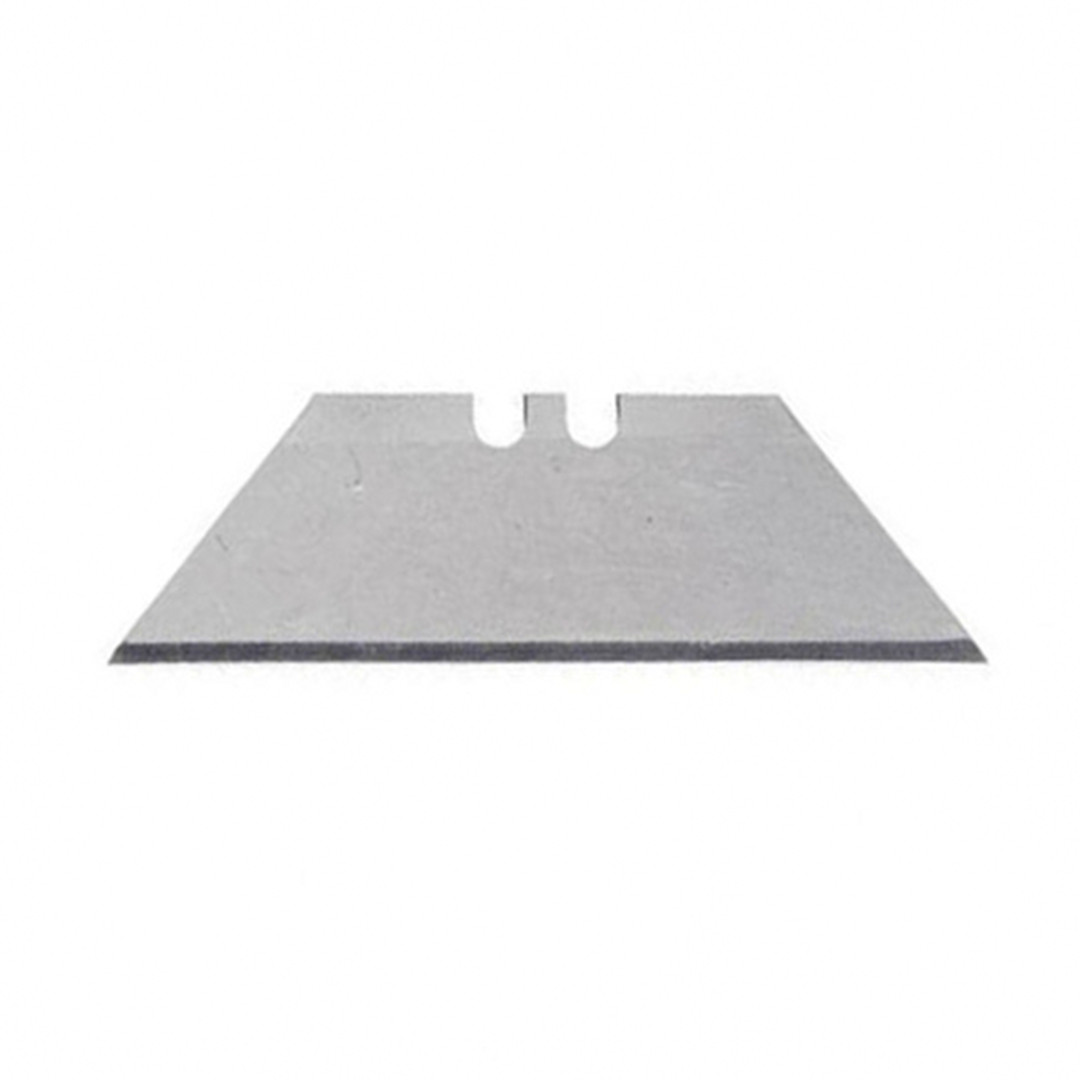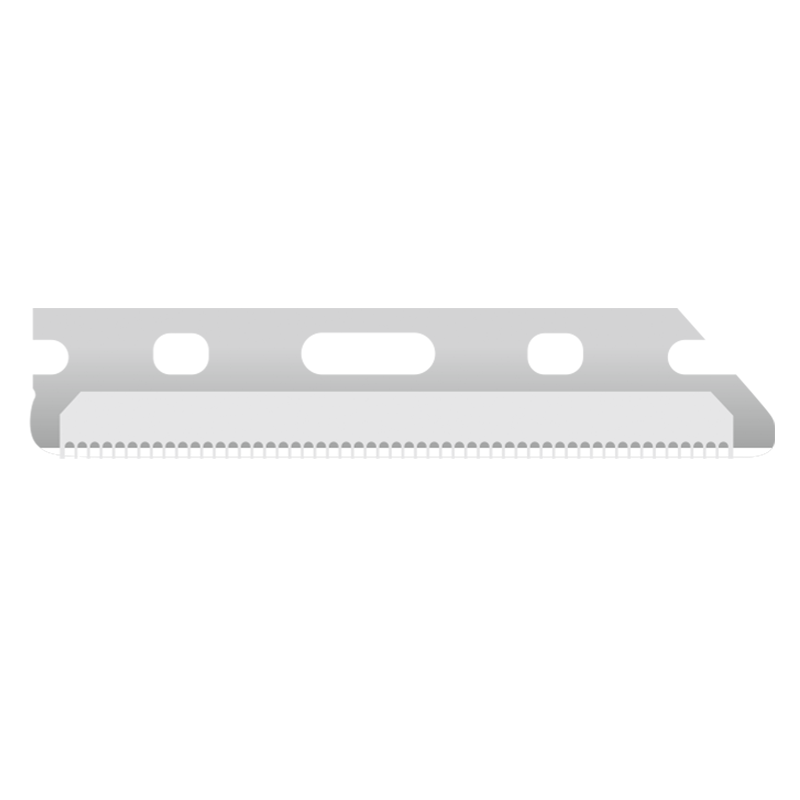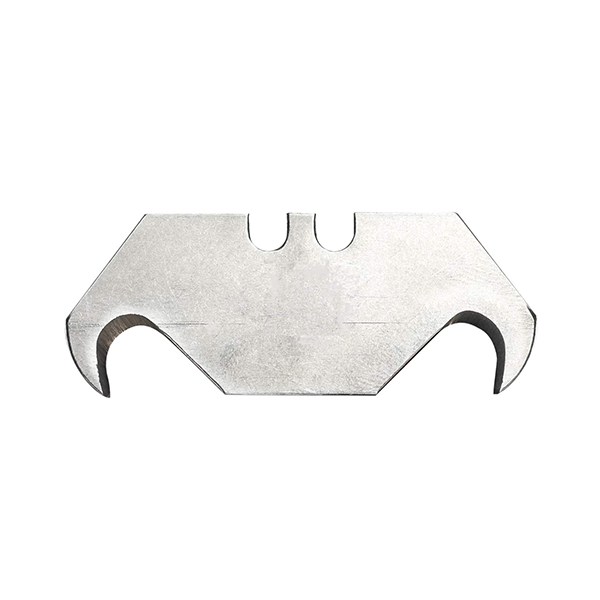The Difference Between 6Cr13, 4Cr13, and 3Cr13 Steel in Razor Blade Manufacturing
In the world of blade manufacturing, the choice of material can significantly impact the performance, durability, and utility of a blade. Specific types of stainless steel, such as 6Cr13, 4Cr13, and 3Cr13, are commonly used due to their unique properties. However, understanding the differences between these materials can be a complex task. In this article, we delve into the characteristics of these steels and explore their applications in blade manufacturing.

Understanding the Cr13 Steel Series
The Cr13 series, which includes 6Cr13, 4Cr13, and 3Cr13, is part of the Cr stainless steel family. As the name suggests, the series primarily differs in the amount of carbon (C) and chromium (Cr) they contain. The number preceding ‘Cr’ in their nomenclature denotes the carbon content in hundredths of a percent. For instance, 6Cr13 contains 0.6% carbon, while 4Cr13 and 3Cr13 contain 0.4% and 0.3% carbon, respectively.
”The carbon content of the steel directly influences its hardness and strength, while chromium enhances its corrosion resistance and wear resistance.”
Let’s delve further into each of these steel types:
6Cr13 Steel
Among the three, 6Cr13 steel has the highest carbon content. This property makes it harder and more durable, suitable for applications requiring high wear resistance. However, the increased carbon content also makes this steel type more susceptible to corrosion compared to its counterparts.
Here at Xirui, we use 6Cr13 steel in the production of a variety of blades, including our Utility Blades known for their exceptional strength and sharpness.
4Cr13 Steel
4Cr13 steel strikes a balance between hardness and corrosion resistance. It is often used in applications where some degree of toughness is required, without entirely compromising corrosion resistance. A typical use case for 4Cr13 steel is in the manufacturing of scissors, as highlighted by Yamamoto Scissors.
3Cr13 Steel
3Cr13 steel, on the other hand, has the lowest carbon content among the three, making it the softest. It is highly resistant to corrosion but lacks the hardness of 6Cr13 and 4Cr13. This type of steel is suitable for applications where corrosion resistance is a priority over hardness. For instance, it’s commonly used in the production of Eyebrow Razor Blades as it provides the necessary sharpness while also resisting rusting.
”3Cr13 steel is the go-to choice for applications where corrosion resistance is paramount.”
Understanding the differences between these steel types is crucial when choosing the right material for a specific blade application. Despite their similarities, each of these Cr13 steels offers unique benefits that make them suitable for different uses in the blade manufacturing industry.

Heat Treatment: A Crucial Factor
While the composition of the steel plays a significant role in determining its properties, the heat treatment process also has a significant impact on the final product. The heat treatment process involves heating the steel to a specific temperature, holding it at that temperature, and then allowing it to cool down. This process alters the microscopic structure of the steel, leading to changes in its physical and mechanical properties.
6Cr13 Steel
Heat treatment of 6Cr13 steel involves heating it to temperatures between 1050-1130°C. This is followed by oil or air quenching and tempering at temperatures between 200-300°C. This process results in a steel with good mechanical properties and wear resistance. However, the high carbon content makes it less suitable for applications requiring high corrosion resistance. For instance, our 18mm Black SK5 Snap-off Blade utilizes this steel type, offering excellent durability and sharpness.
4Cr13 Steel
4Cr13 steel is typically heat treated at temperatures between 1000-1050°C, followed by oil or air quenching. Tempering is performed at temperatures between 200-300°C. This process results in a material with good hardness and toughness, making it suitable for applications requiring a balance between strength and corrosion resistance.
3Cr13 Steel
On the other hand, 3Cr13 steel is heat treated at temperatures between 980-1050°C, followed by oil or air quenching. Tempering is done at temperatures between 180-350°C. The heat treatment process results in a steel with good corrosion resistance but lower hardness. This makes it ideal for applications where corrosion resistance is more important than hardness.
Comparative Analysis
It’s worth noting that while 6Cr13 has the highest hardness among the three due to its higher carbon content, it also has the lowest corrosion resistance. Conversely, 3Cr13, with the lowest carbon content, has the highest corrosion resistance but the lowest hardness. 4Cr13 offers a balance between these properties.
A comparison between 3Cr13 steel and 440C stainless steel further highlights the trade-off between hardness and corrosion resistance. 440C stainless steel, with a higher carbon content than 3Cr13, is harder but less corrosion-resistant.
| Steel Type | Carbon Content | Chromium Content | Hardness | Corrosion Resistance |
|---|---|---|---|---|
| 6Cr13 | 0.6% | 13% | High | Low |
| 4Cr13 | 0.4% | 13% | Medium | Medium |
| 3Cr13 | 0.3% | 13% | Low | High |
”The choice between 6Cr13, 4Cr13, and 3Cr13 often comes down to the specific requirements of the blade to be manufactured.”
Applications of 6Cr13, 4Cr13, and 3Cr13 Steel in Blade Manufacturing
The unique properties of each steel type make them suitable for different blade applications.
6Cr13 Steel
6Cr13 steel, with its high hardness and excellent wear resistance, is often used in the manufacture of tools and blades requiring high durability. It’s particularly suitable for applications where the blade is subjected to high stress and wear, such as in the production of industrial blades. Here at Xirui, we utilize 6Cr13 steel in our Industrial Blades for its superior strength, ensuring they can withstand the rigors of industrial use.
4Cr13 Steel
4Cr13 steel, with its balanced hardness and corrosion resistance, is extensively used in the manufacture of items such as kitchen cutlery, scissors, and surgical instruments. Its ability to resist wear and corrosion while maintaining a good level of toughness makes it a versatile choice for these applications.
Furthermore, a comparison between 4Cr13 and 440C stainless steel highlights the advantages of 4Cr13 in applications where a balance between hardness and corrosion resistance is required.
3Cr13 Steel
3Cr13 steel, with its excellent corrosion resistance, is commonly used in the manufacture of items that are frequently exposed to corrosive environments. This includes blades for razors, kitchen knives, and marine applications. Here at Xirui, we use 3Cr13 steel in our Eyebrow Razor Blades, as they offer the necessary sharpness while being resistant to rusting.
”Understanding the properties and applications of these different types of steel is crucial in selecting the right material for a specific blade application.”
In conclusion, the choice between 6Cr13, 4Cr13, and 3Cr13 steel depends on the specific requirements of the blade to be manufactured. Each type has its unique strengths and trade-offs, making them suitable for different applications. By understanding these differences, manufacturers can select the most appropriate material that will deliver the desired performance, durability, and utility for their blades.
At Xirui, we pride ourselves on our understanding and use of these materials, ensuring we can provide the most suitable blade for every application. To learn more about our blade offerings and how we can help with your blade needs, please visit our product catalog .

















